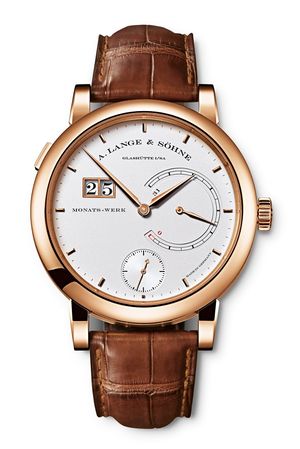The LANGE 31: The Long Path to Perfect Form
The LANGE 31: The Long Path to Perfect Form
| other languages: de |


Featuring a power reserve of one month and constant force delivery across this entire 31-day period, the LANGE 31 attracted considerable attention when it was launched two years ago. Now, Lange is ready to present a second version with an eloquent pink-gold case. This is an ideal opportunity to outline what stands behind the design of a Lange timepiece.

The eminent Saxon manufactory can take credit for a veritable stroke of genius: Not only is the LANGE 31 the first mechanical wristwatch with a tremendous power reserve of an entire month, it also preserves a stable rate for the full 31-day period. Two stacked mainspring barrels, each with a 185-centimetre long spring, store the necessary energy. A constant-force escapement between the twin mainspring barrel and the going train assures that the balance receives an identical amount of energy every ten seconds, regardless of the state of wind of the springs.
A high-tech power pack like this requires space. The movement has a diameter of 37.3 millimetres and is 9.6 millimetres thick – quite an unusual challenge for Lange’s senior designer Martin Schetter. With his team, the Swiss national has spent nearly ten years designing what observers of Lange watches see first. His objective was to develop a balanced visual vocabulary for the impressive case and the prominent dial of the LANGE 31.
From the initial sketch to final acceptance, the design of the dial alone absorbed two years. That sounds like a long time, but it is part of Lange’s heritage to repeatedly scrutinise in-house design iterations. After all, timelessness is one of the requirements imposed on Lange watches. Even after 30 or 50 years, they should not reveal their true age. But how can form be liberated from the influence of zeitgeist? Schetter’s answer is surprisingly simply: “We can give things time. Because it is time alone that judges whether something is timeless.”